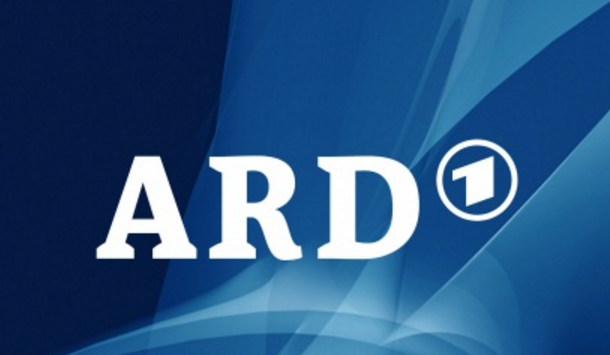indo affix
Indonesian Affixes vs English Affixes – Grammar and Structures
Hello!
When you study about Bahasa Indonesia, you may found that Forming Indonesian Words & Using Indonesian Affixes is quite essential because it is typical. In fact, this is one of the main obstacle in learning Bahasa Indonesia. Unlike English, the affixes is varied from Indonesian Prefixes and Suffixes as well as Indonesian Infixes. Therefore, right now we would compare the Indonesian Affixes vs English Affixes. Take a look!
1. Affixes for verb
The first different of Indonesian Affixes vs English Affixes (especially that attached verb) is the quantity. If you notice, in English, you may found these following suffixes. (These those not includes prefix or suffix that has significant meaning, such as -less, pre-, re-)
- -s/-es = added to verbs that followed third-person pronoun(he/she/it) in present simple
- -ed = for V2 (past tense), form a adjective (anticipated moments)
- -ing = form a noun (building, wedding), present participle verb, form adjective (floating market)
As in Bahasa Indonesia here are the list of affixes.
Indonesian Prefixes
- me-(N) = menjual (sell), mengambil (take)
- ber- = berjuang (fight), berburu (hunt)
- ter- = tertarik (interested), terbuka (open [without intention])
- di- = diambil (be taken [passive]), dipukul (be hit [passive])
- ke- = ketangket (be caught)
- se- = selama (as long as)
Indonesian Suffixes
- -i = Benahi (fix [imperative])
- -kan = lakukan (do), berikan (give)
- -lah = Sudahlah (let it)
- -kah = Benarkah (is it right?), Sudahkah (have you?)
Indonesian Convixes (prefix + suffix)
- me-/ -kan = melakukan (do), menggunakan (use)
- me-/ -i = menugasi (give task/order)
- per-/ -kan = pertunjukkan (show)
- per-/-an = perdebatan (debate)
- pe-(N)/-an = pembuatan (making)
Notes: Bahasa Indonesia also know the affix that called (infiks/sisipan) or infixes. It is put in the middle of a word
Indonesian Infixes
- er- = gerigih (serration)
- el- = telunjuk (pointing finger)
You may notice that the suffixes in English is emerged depends on the time situation (tenses) and also the subject. However, in Bahasa Indonesia, it could be emerged by many situations (active/passive, transitive/intransitive, to form other part of speech) and so on.
Read also: Transitive Verbs and Intransitive Verbs
2. The Sound Changing
If you notice, the prefix me-(N) and pe-(N) has specific grammatical rules that implement when those prefixes meet specific phonemes. Here are some examples (Check me- Prefix)
- me(N) + ambil = mengambil (take)
- pe(N) + guna = pengguna (user)
- me(N) + suap = menyuap (bribe)
- pe(N) + jual = penjual (merchant)
- me(N) + tari = menari (dance)
- me(N) + kopi = mengopi (drink coffee/copy)
On the other hand, in English, it is usually happened with the word that attached with suffixes. Here are the examples.
- ison/tion = concession, transition, abbreviation
- able/ible = edible, reachable
- -er/or = director, player
- so on
3. Other Differences
What is the different with previous group? In latter case, the affixes are have specific meaning even though they do not follow the word, but they can not stand by itself.
Here are another Indonesian Affixes vs English Affixes. Notes: In Bahasa Indonesia it is called attached component (unsur terikat)
English Suffixes vs Bahasa Indonesia
English has many suffixes that included in this category while Bahasa Indonesia has only a few.
(English)
- -ness = tenderness (the quality of being tender), kindness (the quality of being kind)
- -less = helpless (without help), hopeless (without hope)
- -ful = beautiful (full of beauty), doubtful (full of doubt)
- -ment = statement (result of ‘state’ from someone), movement (result of ‘move’)
- -ly = likely (in like manner), badly (in bad manner)
- -er = person carrying an action (player, racer, controller)
- ism = patriotism, nationalism
- and so on
(Bahasa Indonesia)
- -wan/wati =karyawan/karyawati (employee), sastrawan (author)
- -man = seniman (artist), budiman (wise person)
- isme = patriotisme (patriotism), nasionalisme (nationalism)
Indonesian Prefixes
On the other hand, the English and Bahasa Indonesia prefixes have more similarities because many of Indonesian’s were derived from English. Here are some examples.
- pre- (translated in Bahasa Indonesia as ‘pra-‘) = prasejarah (pre-history), prates (pre-test)
- re- = reduplikasi (reduplication), rerun (English), redundan (redundance)
- bi- = bilateral, biseksual (bisexual)
- mis- = miskomunikasi (miscommunication)
- anti- = antiklimaks (anticlimax)
- bio = biologi (biology), biokimia (biochemistry)
However, here are some differences because Bahasa Indonesia also derived from Sanskrit Words in Indonesian Language
- maha- = mahasiswa (university student), mahakarya (masterpiece)
- dasa- = dasawarsa (ten years), dasamuka (ten faces, refer to Rahwana, a wayang character)
- panca = Pancasila (five rules, Indonesian ideology)
Those all things that you should know about Indonesian Affixes vs English Affixes. In case, you have still want to explore more about Indonesian Grammar. Here are several useful articles you should check. Good luck and keep practice!
- Indonesian to English Grammar
- 8 Ways to Learn Indonesian Grammar Structures for Beginners
- Indonesian Grammar Rules
